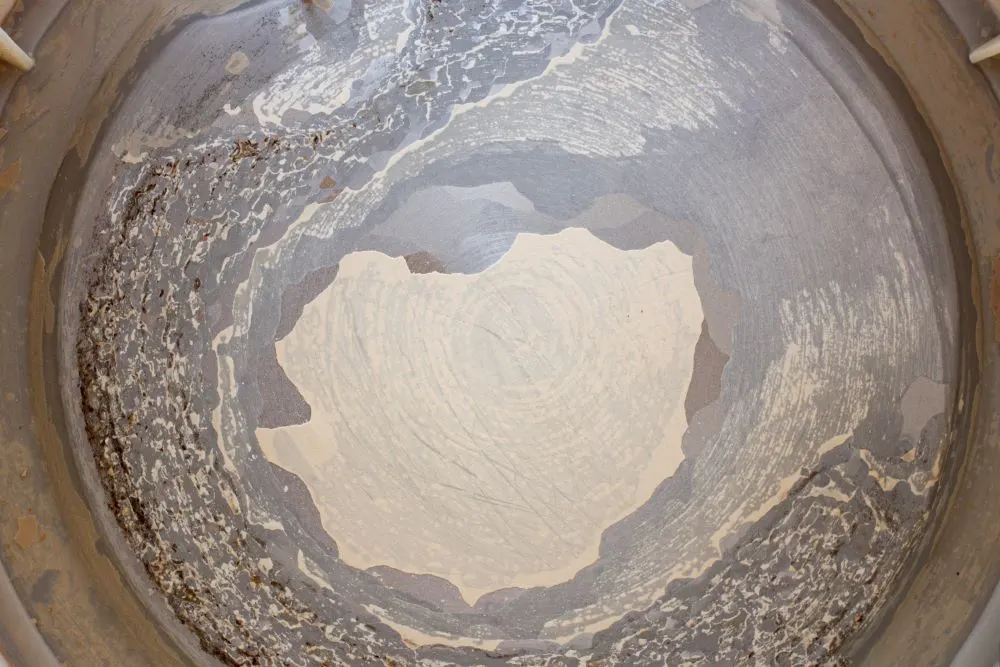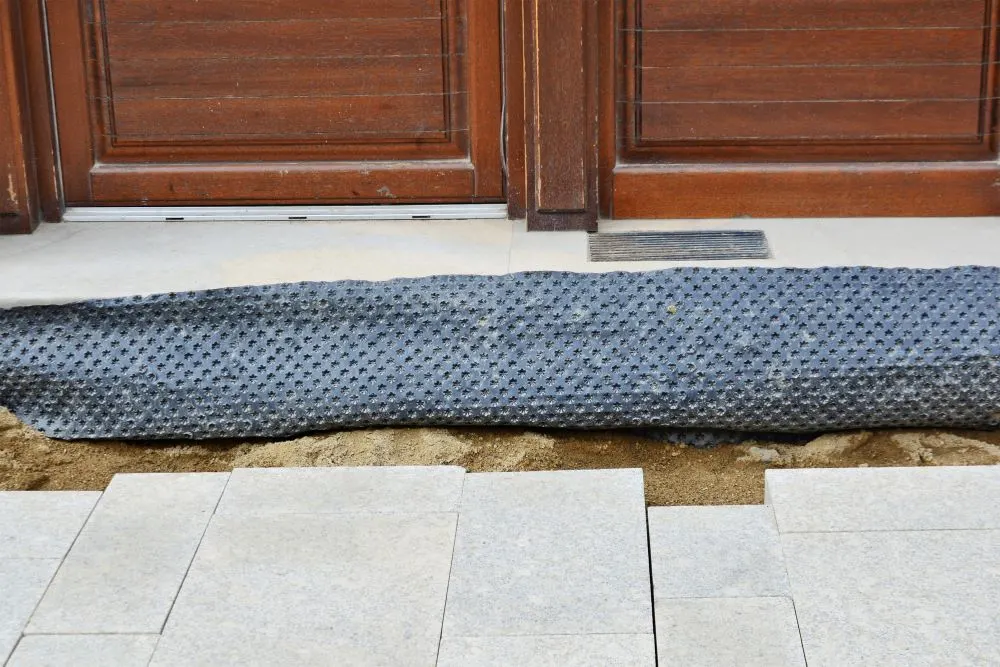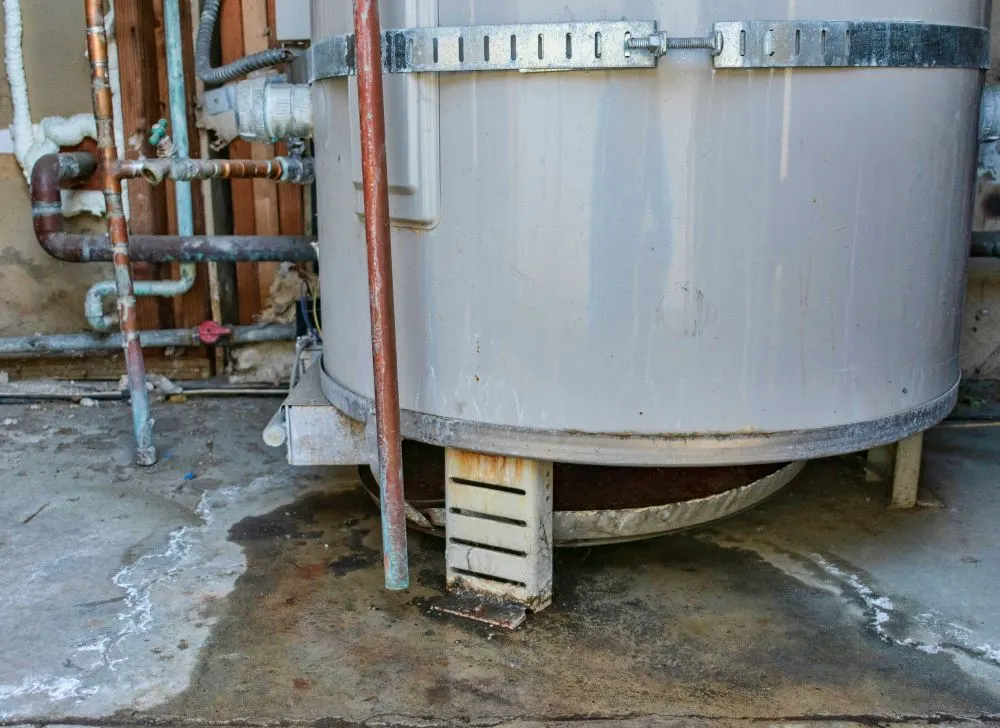“A water heater in your attic is bound to wreck your home… it’s a question of when, not if.” Overhearing this in the office recently reminded me of one of the many myths surrounding the water heater, that humble, yet useful appliance.
People have been installing water heaters above ceilings for a long time, be it in an attic, in a second-floor utility room, or in some other upstairs area. Despite this, the advisability of above-stairs water heaters continues to be hotly debated. Not surprising, since a water leak above the ceiling can potentially devastate the average American home!
Depending on what part of the country you live in, the idea of installing a water heater in the attic, or in some other upstairs location could either be horrifying or perfectly comfortable—maybe you’ve lived with one all your life! Either way, this article is meant to give you the facts, unsteeped in myth and rumor, as well as the best tips for installation of water heaters in this controversial location.

With adequate waterproofing and regular maintenance, a water heater in an attic or other upstairs location can significantly reduce energy bills where (i) high attic temperatures (over 100 °F) aid heating and prevent standby heat loss or (ii) the unit is located close to baths and laundry areas.
The Upside of an Upstairs Water Heater… and the Downside
There are several advantages to keeping a water heater in the attic (or loft), or in some upstairs location in a house. These include:
1. Using Sunlight to Heat Water
If you live in an area that gets ample sunshine through many months of the year, it makes all kinds of sense to locate a water heater upstairs, in the loft or attic.

The uninsulated attic space grows quite hot during the day, and this helps to substantially reduce the cost of heating water, or at least keeping it heated. Now, before you dismiss this fact, consider that the average American home spends up to 20% of its yearly energy bills on heating water—the savings of an attic water heater can work out to several hundred dollars in some cases!
2. The Convenience of an Attic/ Loft Location
Many homes, especially in areas with hot weather, do not have a convenient basement or garage in which to house a water heater. Instead, they are erected on a foundation of concrete, and are commonly termed ‘slab houses’. Californian houses are well-known for being basement-less.
In such houses, the attic is the logical location for installing a water heater. For gas-fired water heaters, especially, where venting is a critical consideration, the attic is the natural choice. Installing an atmospheric vent (aka ‘natural draft’) or a direct vent water heater in the attic makes for convenient venting of exhaust gases out the roof!

3. Proximity to Upstairs Bathrooms and Laundry Area
A third situation where a water heater may be installed upstairs is where a house has the majority of bathrooms as well as the laundry area on the second floor. In such cases, too, installing a water heater in a far-off basement or garage can create multiple problems, including:
- Long waits for hot water to reach upstairs showers.
- Low hot water pressure in upstairs bathroom faucets, showers, and washing machine.
- Higher energy bills resulting from heat loss through long stretches of hot water pipes.
- Lukewarm or cold water at upstairs faucets and showers.
Having a water heater up on the second floor can be the perfect solution, in such cases. Being close to the bathrooms and laundry, the wait time is reduced to almost zero, while the problem of heat lost as water travels through the pipes is likewise cut down. And because the water travels horizontally instead of vertically, there’s no loss of water pressure!
Of course, things are not always hunky-dory with an upstairs water heater. A lot can go wrong and sometimes does. When a water heater is poorly installed or ill-maintained, or a unit is located in a non-waterproofed area, there’s a significant likelihood of property damage from water leaks. The major risks include:
Inadequate or Absent Drain Pan and/or T&P Valve Drain Pipe
As per national plumbing standards, such as UPC and NSPC, as well as most local plumbing codes, a storage water heater must be installed with a sufficiently wide and deep drain pan under it. This important precaution can help prevent property damage by catching drips before they seep into and damage hardwood flooring, wall-to-wall carpeting, or drywall ceilings.
Likewise, regulations across most states mandate that water heater T&P valves should be attached to a drainpipe leading down to within 6″ off the floor. Again, this is an important precaution that lets any hot water trickling out the T&P valve safely into the drain pan at the bottom (or alternatively, into a conveniently located drain).
Incorrect water heater installation often means that a drain pan is either absent or inadequate (too shallow or too small). Sometimes, a T&P valve is left without a drainpipe, so that escaping hot water can spray out all over the surrounding area. In such situations, even a minor leak or a dripping T&P valve can lead to significant property damage over time, including unsightly stains on your ceilings.
Corrosion and/or Lime-scale Build-up
As you no doubt already know, a water heater is prone to corrosion and scale (or lime-scale) build-up over time. This is because the minerals in hot water tend to attack the water heater’s storage tank lining, the lower heating element, as well as connectors and pipes.
Without regular checking and maintenance, this wear and tear can cause a water heater to develop serious leaks, or even split at the seam in extreme cases. If you think you could be facing this problem, check out this handy post on Side-Splitting Water Heaters.
The problem of corrosion and scale build-up is more severe in areas with hard water supply. To read more on the effects of hard water supply on self-cleaning water heaters, see this helpful post Self-Cleaning Water Heaters: Are they worth it?
Neglecting water heater maintenance is never a good idea, even more so in the case of one that is installed in an attic or second-floor location. An upstairs water heater that splits open or develops a big leak could cost a fortune in property damage, ruining floors, ceilings (of downstairs rooms), sidings, and carpeting!

Weather-Related Damage to Poorly Insulated Plumbing
One of the typical causes of water heater catastrophes is poorly insulated or un-insulated hot water pipes. This phenomenon is especially likely in areas that have milder winters, but which might still see rough weather occasionally.
I recall hearing a few years ago from a plumber friend of mine about a house that sustained $300,000 worth of water damage. Days after the homeowners powered off their attic water heater and left for a vacation, the mercury dropped by nearly 50 °F, freezing and bursting the hot water pipes in the attic. The worst of it was that there was absolutely no waterproofing in the attic, meaning that the flooding could seep through and ruin the entire house!
The Challenges of Water Heater Relocation
If your home has an upstairs water heater, reading the previous section might well have freaked you out. Maybe you’re seriously considering relocating your water heater to a basement area, garage, or some crawl space at ground level.
Before you take on such a project, however, there are a few important considerations.
Relocating a water heater from an attic to a garage (or any upstairs to downstairs move) can cost over $1,000, as it includes, (i) fresh electric/ gas supply lines to the new location, (ii) a new vent system for a gas-fired unit, and (iii) physical moving of water heater through living space.
Electric / Gas Supply Lines
One of the biggest hurdles of relocating a water heater is laying fresh power supply lines to the new location. In most cases, running electric cables to a new water heater location is a simpler, cheaper job than laying new natural gas or propane pipes for a gas-fired unit. In either case, however, this is not a DIY project and requires the services of a licensed professional electrician and/or plumber.

Venting for Gas-fired Water Heaters
In the previous section, the ease of installing vents for a gas-fired unit in an attic was listed as one of the advantages of such a location. On the other hand, figuring out a new vent system poses a major challenge while relocating a gas-fired water heater to a basement, garage, or crawl space. This step alone can end up costing anywhere from a few hundred to several thousand dollars!
Physical Relocation of Water Heaters
If you’ve ever hefted a water heater and tried to move it from A to B, you know how heavy these units can be, weighing anywhere from 100 lbs to 200 lbs! Not surprisingly, it’s a huge challenge to bring one of these babies safely down one or more flights of stairs without damaging either the water heater itself or any of the surrounding walls, floors, or carpeting.
In addition to the difficulty of moving a water heater through living space, here’s a curious fact: In some places, attic water heaters are installed early during construction. Hatchways or doors to the attic installed later are often not wide enough to permit moving a water heater through them!
All in all, these challenges account for a tendency to leave old water heaters in the attic, even when a newer one is being installed. Folks often choose to simply drain the old unit and shove it into a corner, rather than take the risk of moving it down and out!
Upstairs Water Heaters: Do’s and Don’ts
The previous section pointed out some of the challenges of relocating an upstairs water heater. If you’re wondering how to safeguard your home from disastrous water leaks without the hassle of moving a monstrous water heater out of its upstairs location, don’t worry… this section gives you the answers you need.
Here are some steps you can take to ensure the safety of your home and property.
1. Waterproofed Flooring and Floor Drain
Installing waterproofed flooring can effectively protect a home from water damage due to an above ceiling water heater. There are multiple options, including a waterproof membrane under the floor tiles, vinyl or PVC sheet flooring, and ceramic or porcelain tile floors with waterproofed grouting.

Casual plumber smiling at camera
Without a doubt, waterproofed flooring in the attic or room that holds your upstairs water heater can be the most effective protection against water damage. In addition to waterproofed flooring, it is essential to have a proper floor drain nearby, with plumbing that carries run-off either to the waste-water line or to a safe, outdoor location.
While a properly waterproofed floor could cost a few hundred bucks, most people would agree that this would be a wise investment to counter the risk of devastating, six-figure property damage! Depending on the type of floor you have (or want), as well as your budget, you could opt for one of the following:
Liquid Membrane Underlayment (LMU)
As the name suggests, these polymer membranes have a paint-like consistency. They’re typically applied using a roller or brush to the sub-floor, which could be drywall, cement board (also called “backerboard”), cement plaster, or concrete masonry.
Once the LMU is cured, that is, dried properly, a flooring layer such as ceramic, vinyl, rubber, or PVC tiles is overlaid on the LMU. There are currently a huge number of LMU options available, including popular brands like Laticrete, Schluter, and Redgard.
Vinyl (or PVC) Sheeting
Sheet vinyl is an economical option for waterproofing an upstairs area such as the attic. For really effective waterproofing, it is best to measure out the vinyl sheeting to climb 2″ to 3″ up the surrounding walls. Finally, use a material like vinyl baseboard or a waterproofing strip (for example, Schluter’s Kerdi-Band (amazon link)) to seal the joint between the flooring and the wall.
Some home improvement stores offer PVC sheeting, usually called “PVC baseboard” that can be installed similarly to vinyl sheets on the floor. A waterproofing strip can be used for the wall-to-flooring joints.
Ceramic or Porcelain Tiles
These are the most popular choice of waterproof flooring material in wet areas (e.g., bathrooms, changing rooms) where aesthetics are an important consideration.
Now, although ceramic (or porcelain) tiles are waterproofed, it’s important to remember that the gaps or cracks between tiles can allow seepage and lead to significant water damage. The crucial factor in preventing this is to ensure that the grouting between tiles is waterproofed regularly, for example, every couple of years.
2. Water Heater Auto Shut-off Valve
An “auto shut-off valve” can serve as an added precaution to minimize the risk of flooding and water damage from a leaky, upstairs water heater. This device typically consists of a sensor installed in the water heater drain pan, which activates a shut-off valve placed on the water heater’s cold water inlet.
As soon as the water in the drain pan rises to the level of the sensor, the sensor triggers the shut-off valve. This prevents further water inflow into the water heater and limits the amount of damage occurring from a leaking water heater. Some models come with a handy audio alarm that beeps (amazon link) or goes off when a water leak is detected.
Although not foolproof, this device can be a very useful damage control tool when it comes to above ceiling water heaters. The fact that an auto shut-off valve is easy to install, and can come as cheap as a hand-held blender is, of course, a distinct plus.
3. Adequately Sized Drain Pan and T&P Valve Drain Pipe
As described in the previous section, incorrect water heater installs often have either an absent or an inadequate drain pan, or a missing T&P valve drain pipe.
Following the manufacturer’s recommendations in the water heater manual while choosing a correctly sized drain pan can help to minimize the risk of water damage, no matter where your water heater is located. Similarly, ensuring that a clog-free drain pipe runs down from the T&P valve to roughly 6″ off the floor can prevent hot water spewing and spraying the surrounding area.
4. Eye for Corrosion and Leaks
It never does to neglect a water heater. Keeping an eye out for signs of corrosion during regular checks (say, every three to four months) is a good precaution against being caught unaware by a leaking water heater. Pay particular attention to the bottom of the unit, as well as inspecting the T&P valve, and cold and hot water connectors and pipes for signs of rust and scale build-up. Look carefully for signs of moisture, which could indicate pinhole leaks.
5. Twice Yearly Draining
Sediment build-up inside is the most common cause of water heater failure. Using the drain valve near the bottom of the water heater to drain its contents once or twice every year can go a long way in preventing the build-up of sediment. For step-by-step instructions on how to do this, see this handy post.

6. Yearly De-scaling and Flushing
Besides draining, regular de-scaling and flushing of a water heater are also crucial to preventing the accumulation of scale deposits that could ruin a water heater and cause major water leakage. Check out this useful post for how to de-scale and flush a water heater.
Knowing what you now know, you can now take the necessary precautions to ensure that you continue to enjoy the benefits of having an upstairs water heater, without having to fear any disastrous consequences.
Happy hot water!


![[Pack of 1] Waterproof Strip 5 inches x 33 feet /4 mils Thick - Waterproof Band for Shower - Waterproof Membrane Strip for Bathroom, Sauna and Steam Room Tiles [Pack of 1] Waterproof Strip 5 inches x 33 feet /4 mils Thick - Waterproof Band for Shower - Waterproof Membrane Strip for Bathroom, Sauna and Steam Room Tiles](https://m.media-amazon.com/images/I/51lwv0+h0nL._SL500_.jpg)
